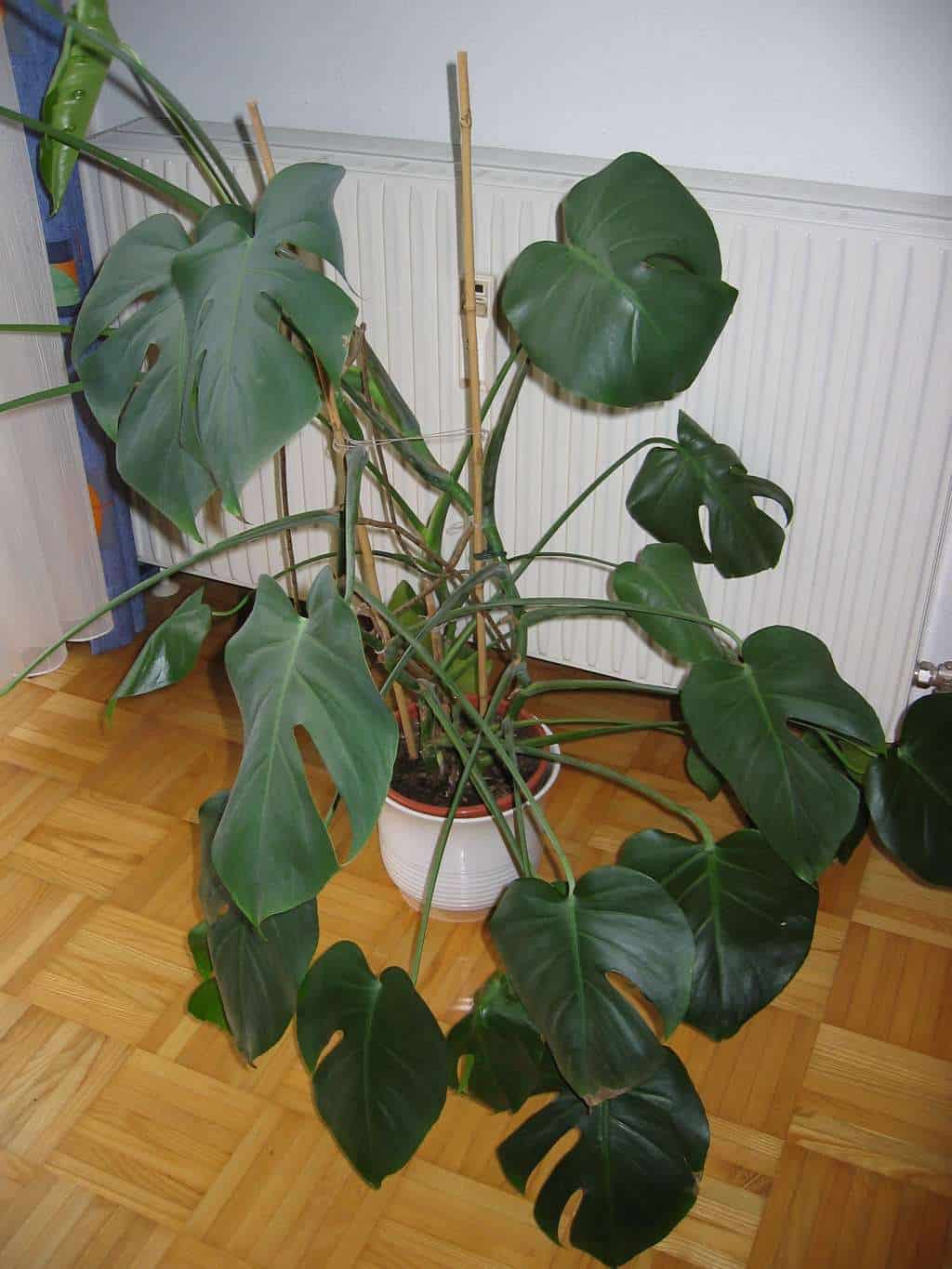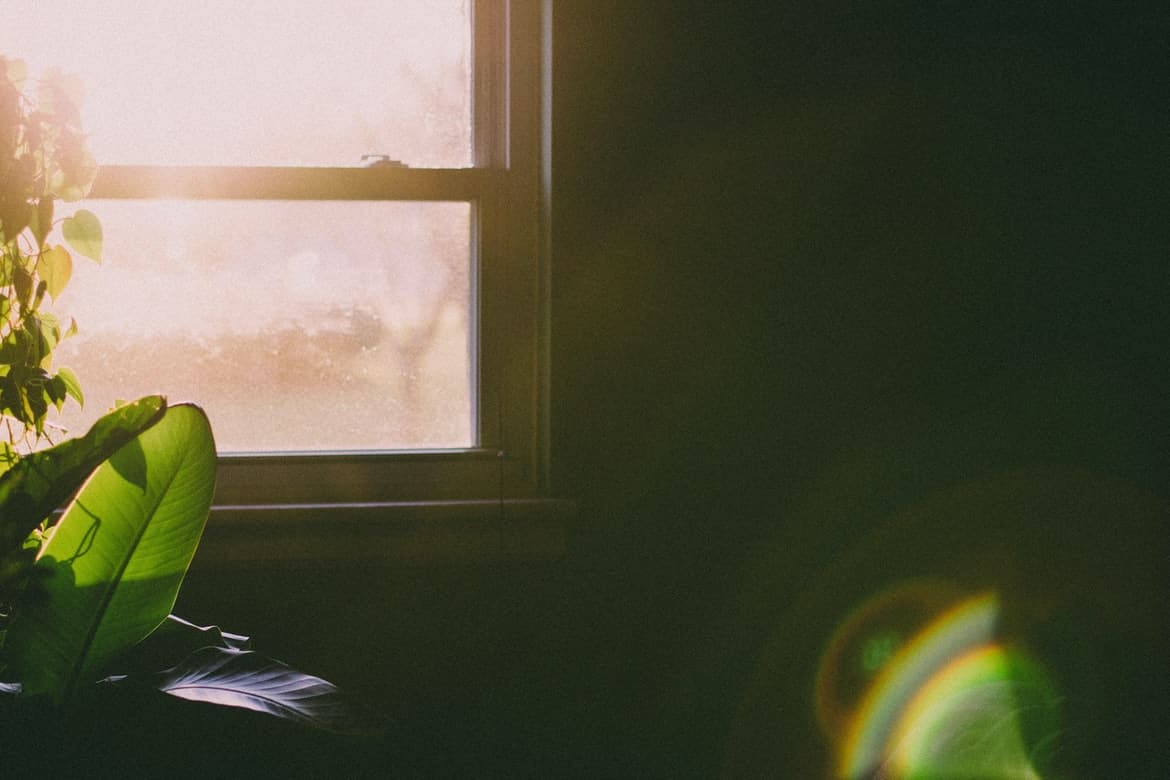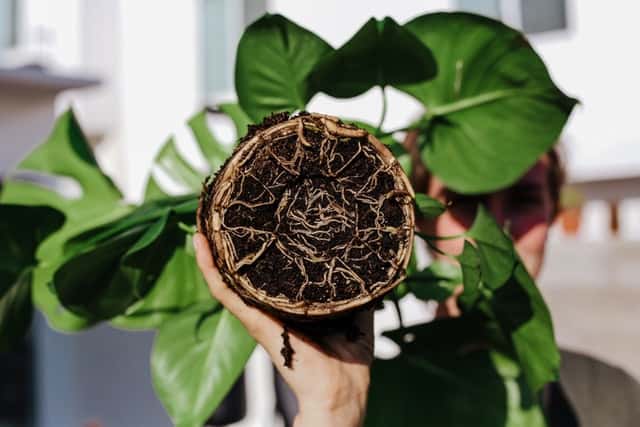Monstera plants with excessively long stems and sparse leaves volume mean leggy growth due to poor growing conditions.

As a plant owner myself, I know it’s nerve-wracking when your plant starts to appear less-than-healthy. Fortunately, being leggy is a simple problem to solve. So don’t be afraid!
Continue reading to learn what causes the problem, how to solve it, what sort of light a Monstera requires, how to accommodate Monsteras in low-light circumstances, and so on.
Table of Contents Show
Causes of Leggy Monstera (Here’s How to Fix it)
Because a leggy Monstera doesn’t get enough light, it extends out with thin leaves and long stalks.
Thus, in short, a leggy Monstera will extend towards whatever source of light it can find.
Let’s have a look at the reasons for your Monstera’s legginess and how to fix them.
1. Inadequate Sunlight
Monsteras develop leggy for various causes, the most common being exposure to light.
However, the better, the more attention you can give it (while maintaining a regular day/night schedule), the better your Monstera will thrive.
If a Monstera does not have access to adequate sunshine or a light source, it will naturally seek whatever light is available at the moment.

Because Monsteras are climbers, they will grow faster if exposed to more light.
The more light a plant receives, the more food it can create through photosynthesis and grow larger.
However, Monstera leaves can get scorched or sunburnt if left on the direct sunlight for too long.
Aside from being leggy, Monsteras will shrink in size and have fewer holes on their leaves if they are not exposed to light.
They won’t carry out the Fenestration activities on the plant since they won’t have adequate light. The plant’s overall structure will not be as beautiful as it would be if you gave it enough light.
Solutions
- Shift your Monstera to a location that gets enough light to flourish.
- Monstera thrives in east, south, and west-facing windows because of the amount and intensity of light that windows facing specific directions get.
- Expose your Monstera to strong, indirect sunlight; direct sunlight can severely harm the plant, causing yellowing and scorched leaves.
- A grow light is an excellent alternative to natural light that you can use in any location and on any budget throughout the winter months.
Artificial Light for Leggy Monstera
You may utilize artificial lights to produce a light source for the plants if you don’t receive enough sunlight in your residence.
If you use artificial light, make sure the light is turned on for your Monstera at least 12 hours per day.
There are a variety of light fixtures and lamps; bulbs can be inserted into any conventional lamp for the casual plant keeper who wants to ensure their plants have appropriate light during the winter.
| Grow Lights | Features | Product Image |
|---|---|---|
| SANSI Grow Light Bulb | 1. Patented COC technology 2. Light bulb lifespan to 25,000 hours. 3. Safe and Reliable |  |
| GroDrow 150 LED Grow Light | 1. 150 efficient grow LEDs (100 red and 50 blue) 2. 3 spectrum modes(Red, Blue & Mixed Spectrum) |  |
| LED Grow Lights-GVG LED | Ideal for all growth phases consists of 395nm of UV, 660nm of red light and 730nm of far-red light, 3000K&5000K of the white light spectrum |  |
2. Over-Fertilizing Issue
An imbalance of nutrients can limit a Monstera’s development and damage the leaves.
On the other hand, overfertilization produces chemical burns on the roots of your Monstera.
Similarly, Monstera will generate cells quicker than average if it receives too much nutrition.
As a result, the stem becomes weak and lengthy, making it vulnerable to mechanical harm.

How to Reverse Monsteras’ Overfertilization?
To revese overfertilization, leach out excess fertilizer by thoroughly watering till the water oozes out from the drain hole.
Also, with a spoon or shovel, remove as much of the white crust off the top of the soil.
- Then, slowly add water to the soil by placing your Monstera in a tub, shower, sink, or outside.
- Allow the pot to drain before watering it again. Repeat this process three or four times more to remove as many extra minerals from the soil as possible.
- After that, wait a few hours for your Monstera to drain.
Tips to Fertilize Monstera Properly
- Feed your Monsterawith a 20-20-20 liquid fertilizer. Dilute half a teaspoon of 20-20-20 liquid fertilizer in a gallon of water.
- Fertilize them every two weeks to once per month during these fast-growing seasons.
- Do not fertilize when your plant is dormant during winter.
- As for organic fertilizer, LiquiDirt is one of the best options for your Monstera. It is all-purpose organic plant food.
3. Improper Temperature and Humidity
Monsteras are tropical plants that grow in 68 to 86°F (20 to 30°C). However, your Monstera will overheat if the temperature rises beyond 86°F (30°C).
Similarly, increased temperatures can also produce growth spurts in younger seedlings.
When there is a lack of sunlight for Monstera, the humidity level also decreases, giving your Monstera get a leggy look.
Solutions
- Keeping your indoor temperature consistently above 60°F and your indoor humidity between 40 and 50% should be adequate to keep most Monsteras healthy and happy.
- Keep your Monstera away from exposure to cold, hot, or dry air drafts.
- To measure indoor humidity, use a hygrometer.
- You can also use a humidifier, pebble tray or grouping your Monsteras to increase humidity.
- Regularly mist the plants using spray bottles in the morning.
- Keep an eye on how your heating and air conditioning vents are blowing, and stay away from drafty windows and doors.

4. Inappropriate Container
Another cause of legginess in your Monsteras is overcrowded roots in the container.
As a result, drainage and aeration in the soil are abstracted.
When your Monstera becomes overcrowded, light does not reach all parts of the plant, and portions of it may seek out additional light, becoming leggy in the process.

Solutions
- Make sure to have drainage holes in the pot.
- A pot made of plastic or glazed terracotta will be perfect for your Monstera. The porous nature of Terracotta pots allows for air and water to move through the walls, preventing soil disease and root rot.
- If your Monstera is still young, choose a smaller container with a diameter of no more than 8 inches (20 cm). The pot size of a mature Monstera can reach two feet (60 cm).
| Pots | Pot Size | Product Image |
|---|---|---|
| 6 Inch Pots Ceramic Planter | 1. 6"D x 6"W x 5.5"H 2. Porcelain, Ceramic |  |
| Terracotta Plant Pot with Drainage Hole | 1. 7.8"D x 7.8"W x 8.8"H 2. True Terracotta Ceramic Material with High Temperature Firing |  |
Cure Legginess in Monstera
If your Monsteras are beginning to show indications of legginess, there are a few things you can do to help them look and develop better than before.
Pruning your Monsteras is one of the remedies. This is where you’ll remove all of your Monstera’s undesirable foliage.
Prune Back Leggy Growth
If you have a leggy Monstera, one of the few methods to improve its appearance is to address the underlying problem and trim back the leggy growth.
It may appear to be a daunting task, but it is relatively easy. Before your Monstera starts its growing season, prune it in the spring and early summer.
You can also propagate the cuttings that were discarded.
Similarly, it ensures that it has adequate energy to swiftly mend any cuts, reducing the risk of infection or insect infestation.
It’s critical to gather your provisions before trimming your Monstera. You’ll also need:
Note: Before pruning, wash your hands and sterilize your instruments to prevent bacteria and illness from spreading.
Steps to Prune Back Leggy Monstera
- Cut off any dead, damaged, dying, or diseased leaves as close to where they are attached to the stem as possible using your sanitized gardening scissor or shear.
- Determine which sections of the Monstera to cut. You can safely trim any scant or damaged growth away.
- Trace the stems that need to be clipped down to the node or main stem once you’ve selected them.
- Cut it at a 45-degree angle to avoid cutting the main stem.
- Prune one-fourth inch above the bud; if you cut too near or too steeply, the bud will die.
From Editorial Team
Monsteras legginess is a problem that every novice enthusiast encounters throughout their first few years of plant growth.
Light is an essential aspect in avoiding a leggy Monstera. By giving the plant the correct quantity of light, you can prevent it from stretching and becoming lanky in search of a better source.
I hope you’ve been able to get the solutions for your Monstera with this article. Please be sure to leave comments in the box if you have any queries.
Happy Gardening!


